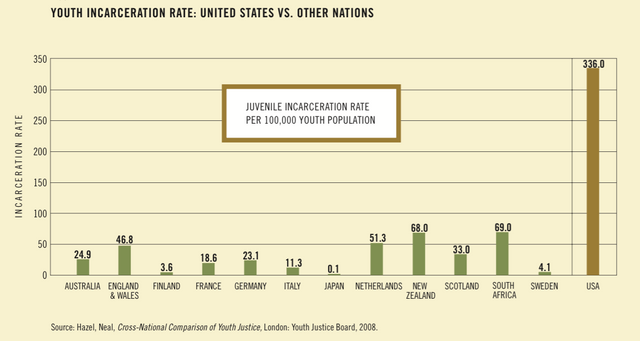Evan Blake
An eleven-year-old girl has been charged with murder in connection with the death of a two-month-old infant in suburban Wickliffe, outside Cleveland, Ohio. The child is currently being held at Lake County Juvenile Detention Center. In accordance with juvenile justice proceedings, the child’s name has not been made public.
At a hearing on February 9, Lake County Juvenile Court Judge Karen Lawson entered a “not true” plea—the juvenile equivalent of a not guilty plea—on behalf of the eleven-year-old. Lawson ordered that the child undergo a psychiatric evaluation before her next court appearance.
The deceased infant’s mother, Trina Whitehead, had allowed the baby to stay the night at the home of the accused girl and her mother. The latter had offered to care for the baby that night to give Whitehead some respite. It was Whitehead’s first night apart from the infant since its birth.
Wickliffe Police Chief Randy Ice summarized the night’s events at a press conference on Monday, February 9. He said that the accused girl, her mother and the infant were on a couch downstairs when the mother fell asleep at roughly 3 a.m. on the morning of Friday, February 6. According to the police narrative, the eleven-year-old took the infant upstairs, beat her severely, and later woke up her mother at around 3:30 a.m. with the unconscious baby, bleeding and her head badly swollen, in her arms.
The mother immediately called the police. The baby was flown to a children’s trauma center in Cleveland, where she died during surgery some six hours later. The Cuyahoga County Coroner’s office later ruled the death a homicide, the result of injuries to her brain, liver, spleen and kidney, and extensive internal bleeding.
Ice claimed that the girl did not express remorse over the death, saying, “I’m not sure she appreciated the gravity of what she did.” On the telephone call to the police from her mother, however, the girl can be heard crying in the background. She also cried during her initial hearing, hung her head throughout the proceeding, and is reportedly having emotional problems.
Media reports have largely parroted the police story of the night’s events.
Trina Whitehead has told reporters that she and the girl’s mother were best friends, that nothing in the girl’s previous behavior had given her cause for alarm, and that she seemed entirely normal. She told the Associated Pressthat she considered her friend’s daughter a “sweet girl,” and that “I definitely trusted her. I never thought my baby would be put in some type of harm.” Whitehead’s other two daughters, who are 7 and 8 years old, had in the past stayed overnight at her friend’s home without any problems.
That a prosecutor finds it appropriate to charge an eleven-year-old with murder—by definition a conscious and premeditated act—with only these facts is appalling, though by no means unusual.

The US incarcerates more children than any other country in the world, with nearly half a million children brought to juvenile detention centers each year.
According to a 2011 report by the Annie E. Casey Foundation, “America’s heavy reliance on juvenile incarceration is unique among the world’s developed nations. Though juvenile violent crime arrest rates are only marginally higher in the United States than in many other nations, a recently published international comparison found that America’s youth custody rate was 336 of every 100,000 youth in 2002—nearly five times the rate of the next highest nation (69 per 100,000 in South Africa).”
In 2012, the most recent year for which statistics are available, 20 children age 12 and under in the US were accused of murder.
The US is the only country in the world that routinely jails minors for life, and remains the only nation to refuse to ratify the United Nations Convention of the Child, which prohibits, among other things, the death penalty and life sentences for children and the prosecution of children as adults.
According to a 2011 Human Rights Watch report, roughly 12 percent of youth held in juvenile facilities reported that they had been victims of sexual abuse while in detention.
While juvenile crime rates have steadily decreased since the early 1990s, legislation has moved in a generally draconian direction, leading to higher rates of juvenile life without parole (JLWOP) sentencing.
Youth given JLWOP sentences are condemned to life in prison while still in their formative years. According to the Juvenile Law Center, youth held in adult prisons are 36 times more likely to commit suicide.
Before the 2012 US Supreme Court case Miller v. Alabama, 29 states had statutes that allowed sentences of life without parole for juveniles.
The Miller case failed to ban JLWOP sentencing outright, and instead merely required judges to consider the individual circumstances of each case before condemning a youth to life imprisonment without parole.
There are roughly 2,600 prisoners in the US who were tried as juveniles and are serving their entire lives in prison, as could be the fate of 10-year-old Tristin Kurilla in Pennsylvania.
Following the reinstatement of the death penalty in the US in 1976, twenty-two executions for crimes committed as juveniles have been carried out.
No comments:
Post a Comment